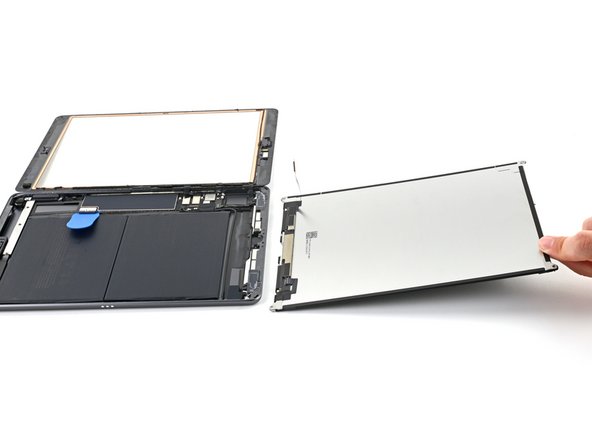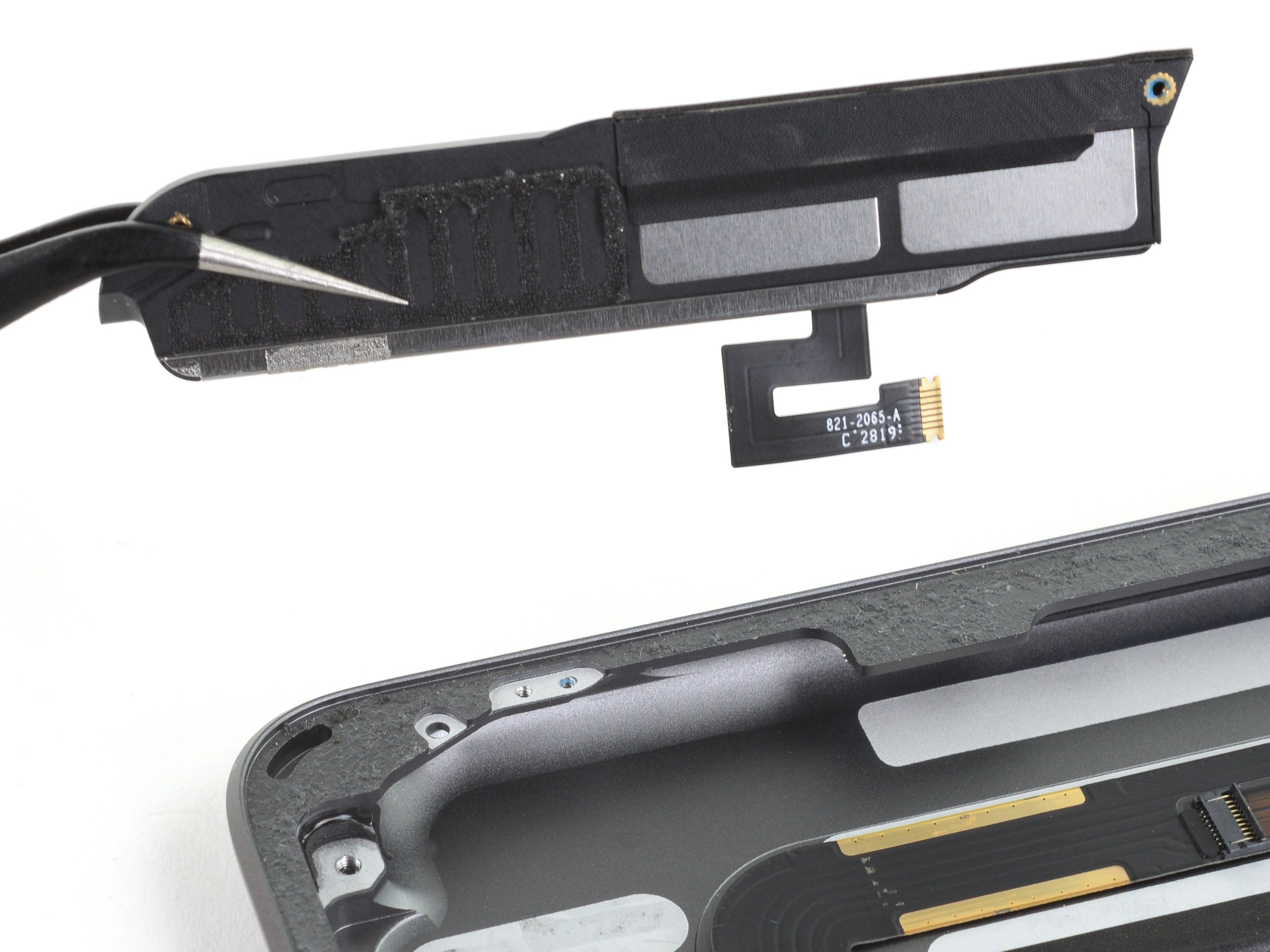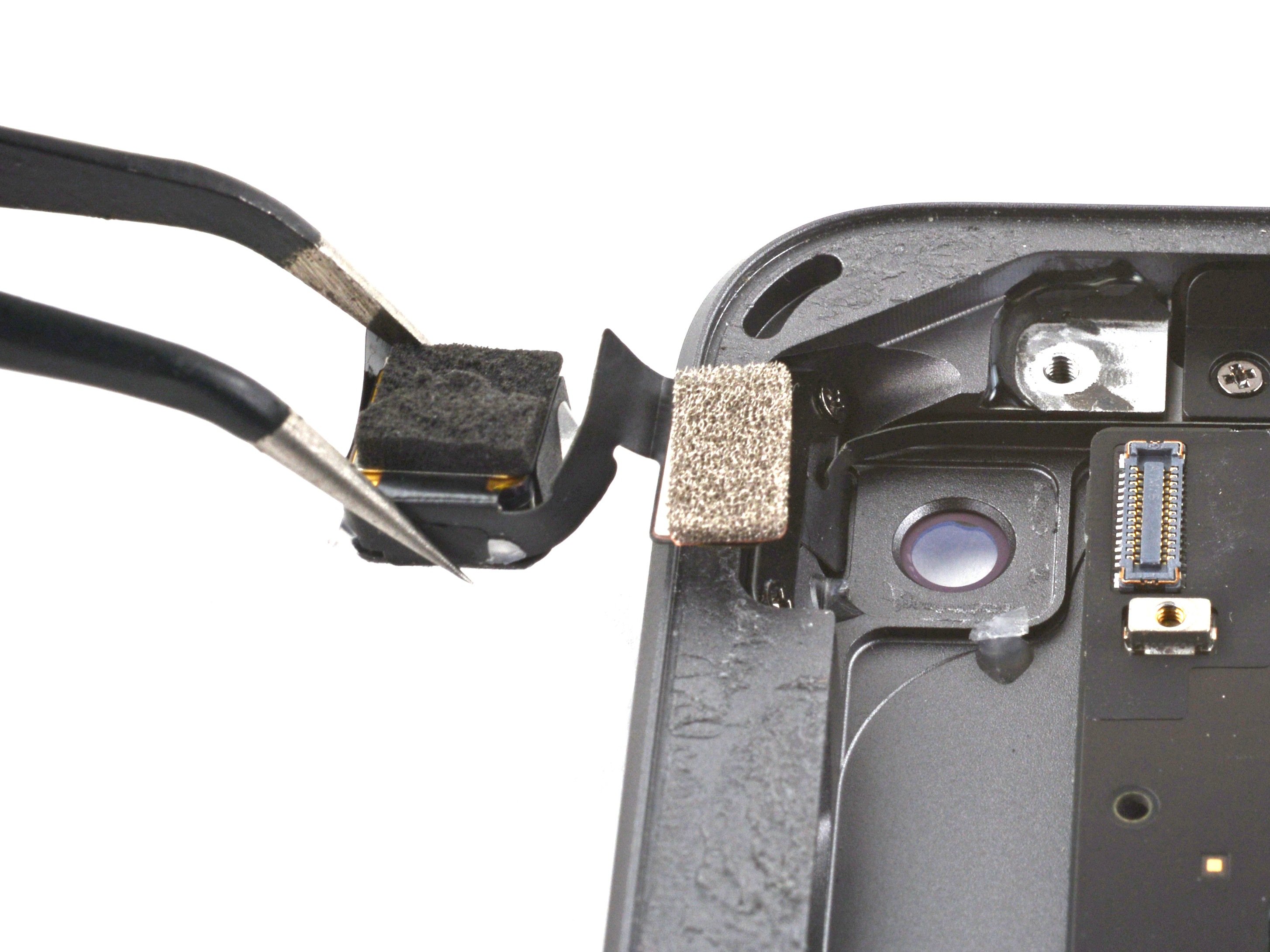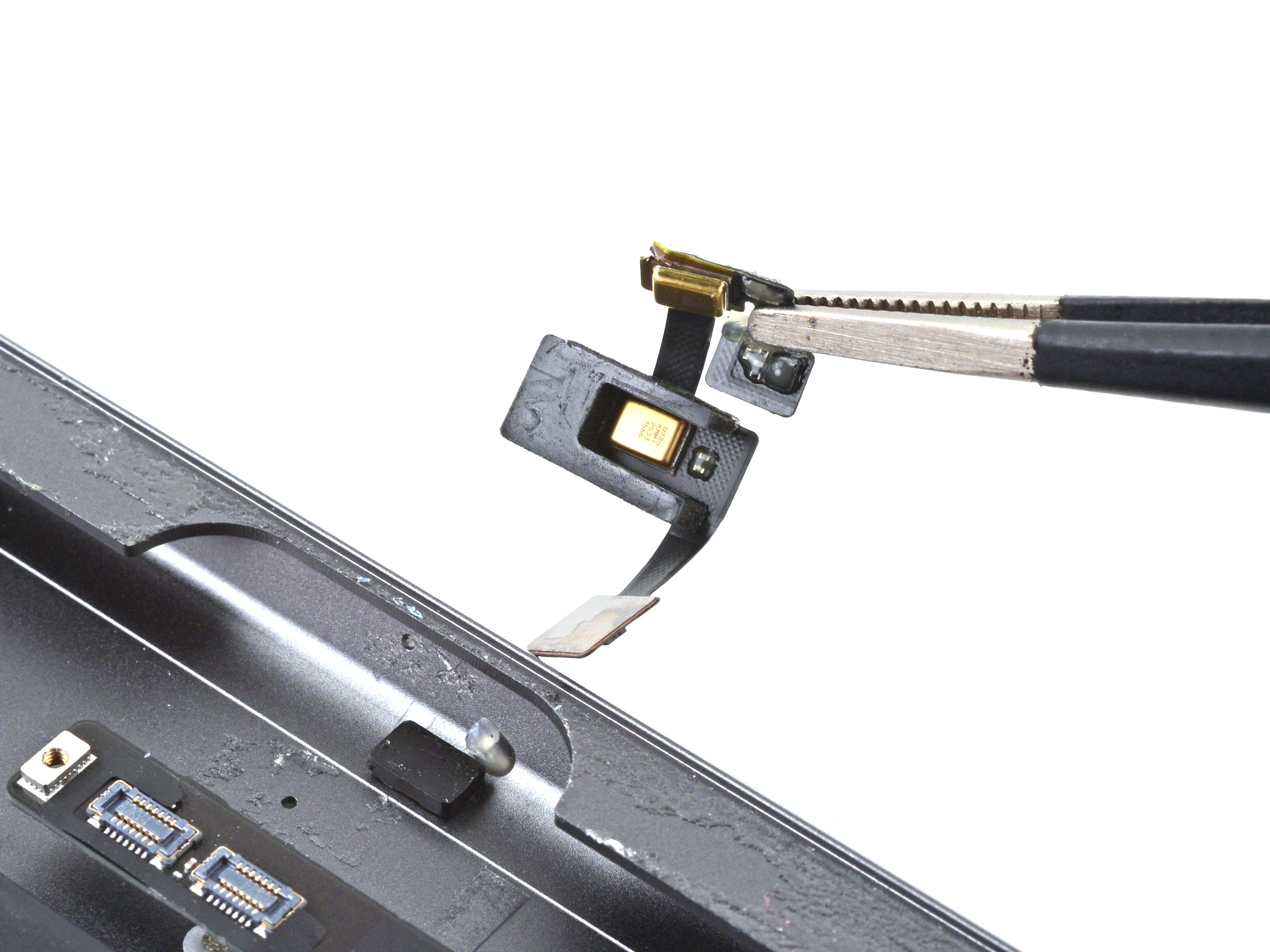iPad 8 LCD Replacement
Duration: 45 minutes
Steps: 36 Steps
For your own safety, make sure to drain that battery to below 25% before diving into the disassembly of your iPad. Trust us, it's a smart move!
Ready to give your iPad 8 a new lease on life? This guide will help you replace the liquid crystal display (LCD) with ease. Unlike newer iPads and most phones, the iPad 8 keeps its glass digitizer and LCD separate—pretty cool, right? Just a heads-up: this guide is for the Wi-Fi version only, so if you're dealing with the LTE version, you’ll need to check out the other guide. For safety, make sure to drain your battery below 25% before diving in to avoid any potential fire hazards if the battery gets damaged. And hey, if your battery is looking a little puffy, handle it with care. When it comes to isolating the battery with a blocker, take it slow—those contacts can be delicate. If you decide not to isolate the battery, just steer clear of metal tools unless absolutely necessary (like when you need to remove screws). That will help avoid any damage to the battery or sensitive components. Some of the photos here might show a different model, but don't stress—they’re close enough to not mess with the procedure. Good luck!
Step 1
- Warm up an iOpener and stick it on the left side of your device for a solid two minutes to get things nice and toasty.
Tools Used
Step 2
- As you give the adhesive some time to chill and loosen up, keep in mind these delicate spots that need a gentle touch while prying:
- Front camera
- Antennas
- Display cables
Step 3
The next three steps will showcase the Anti-Clamp, a nifty tool we created to simplify the opening process. If you’re not using the Anti-Clamp, feel free to jump ahead three steps for a different method.
For all the details on using the Anti-Clamp, check out this guide.
If your iPad's surface feels a bit too slick for the Anti-Clamp to grip, just grab some tape and make it a little grippier!
- Slide the blue handle back to release the Anti-Clamp's arms.
- Set something underneath your iPad so it stays balanced between the suction cups.
- Place the suction cups close to the center of the left edge—one near the top, the other near the bottom.
- Keep the bottom of the Anti-Clamp steady and press down firmly on the top cup to create suction.
Step 4
- Slide the blue handle forward to lock those arms in place.
- Give the handle a full 360-degree clockwise twist, or keep turning until the suction cups start to stretch a bit.
- Keep an eye on the suction cups to make sure they stay perfectly lined up. If they start to drift, just loosen them a little and realign the arms.
Step 5
Take it easy! Only twist a half turn at a time, and give it a minute to chill between each turn. Let the Anti-Clamp and a little patience do their magic for you.
Want the full scoop on how to work that hair dryer like a pro? Check out this guide.
If the Anti-Clamp isn’t opening up enough, just warm it up a bit more and give the handle a gentle half-turn clockwise.
- Give it about a minute to let the adhesive loosen up and create a little gap to work with.
- If the screen isn’t warming up enough, try using a hair dryer along the left edge of the iPad to heat things up.
- Once the Anti-Clamp has made a nice opening, slide an opening pick under the digitizer carefully.
- Go ahead and skip the next step.
Step 6
- Once the screen has warmed up and feels comfortably warm to the touch, grab your suction handle and attach it to the left edge of the screen, as close to the edge as you can get.
- Gently lift the screen with the suction handle to open up a small gap between the digitizer and the frame—just enough for the next step.
- Slip an opening pick into that little gap you just made between the digitizer and the frame, and you’re on your way!
If your screen is totally shattered, try slapping on some clear packing tape—this should help the suction cup stick better. If that doesn't do the trick, some heavy-duty tape can work in place of the suction cup. And if you're feeling a bit daring, superglue the suction cup to the cracked screen. But hey, if things get tricky, don't hesitate to schedule a repair for some expert help!
Tools Used
Step 7
No stress if you spot the opening pick poking through the digitizer — just give it a gentle tug and pull it out. Your LCD screen should be perfectly safe, but leaving adhesive behind can make things messy and harder to clean later on.
- Pop a second opening pick into the gap you've just made.
- Gently slide that pick toward the bottom-left corner to break the adhesive's grip.
- Keep the pick tucked into that bottom-left corner to keep the adhesive from getting cozy again.
Step 8
- If your opening pick gets caught in the adhesive, just give it a little roll along the edge of the iPad to keep things moving and gently separate that sticky stuff.
Step 9
- Gently slide your first opening pick up towards the top-left corner to start loosening that stubborn adhesive.
- Keep the pick wedged in the top-left corner so the adhesive doesn’t sneak back and seal itself.
Step 10
- Warm up your iOpener and give it a cozy two-minute stay on the top edge of your device.
Tools Used
Step 11
- Give that pick a spin around the top-left corner of your device to gently break free the adhesive. You've got this!
Step 12
Keep your pick away from the front camera lens—sliding over it might cause some unwanted damage. Don’t worry, the next steps have got your back on this!
- Gently glide the opening pick along the upper edge of your device, making sure to pause right before you hit the front camera. You're doing great!
Step 13
- Gently pull the pick out so that just the tip stays tucked between the digitizer and the frame.
- Carefully slide the pick over the front camera to loosen the adhesive.
- Rest the pick near the right side of the front camera and get ready for the next step.
Step 14
- Pop the pick back in and gently slide it up towards the top-right corner to fully loosen that stubborn top adhesive.
- Keep the pick lodged in the top-right corner so the adhesive doesn't sneak back together on you.
Step 15
- Warm up an iOpener and stick it on the right edge of your device for a solid two minutes to loosen things up.
Tools Used
Step 16
- Gently glide the pick around the top-right corner of your device to carefully break that adhesive seal. You're doing great!
Step 17
The display cables can be found about halfway up from the bottom of the iPad. Once you get three inches from the bottom, it's time to stop sliding!
- Pop in a fresh opening pick and slide it right to the middle of the iPad's right edge. Easy does it!
Step 18
- Warm up an iOpener and stick it on the bottom edge of your device for a solid two minutes to loosen things up.
Tools Used
Step 19
Avoid spinning the pick all the way around the corner — the antenna will not appreciate the dance moves!
- Gently slide the pick into the bottom-left corner and work it along to loosen the adhesive.
- Once the pick is in place, leave it there before moving on to the next step.
Step 20
Gently slide the pick towards the home button, but not away from it—trust us, you don’t want to accidentally mess with that antenna!
If you need to glide the pick over this part again, just pull it out and pop it back in at the bottom-left corner to keep things smooth.
- Slide a fresh opening pick into the gap you've just made on the bottom edge of the iPad.
- Gently glide the pick over the antenna, but stop just shy of the home button.
- Leave the pick hanging out just to the left of the home button before you move on.
Step 21
Be gentle and only insert the pick up to 1 mm to keep the right antenna safe from any harm!
- Pop an opening pick into the gap you just made like a pro.
- Gently slide the pick under the home button, gliding it toward the bottom-right corner, making sure only the tip sneaks between the digitizer and the frame.
Step 22
Gently slide the pick towards the home button, but don't push it away from it. Doing so could risk damaging the antenna. Take it easy, and keep that pick in the right direction!
If you need to slide the pick over this part again, just pop it out and slide it back in at the bottom-right corner to keep things smooth.
- Slide that pick back in and shimmy it towards the home button to fully break free that stubborn bottom adhesive.
- Once you're done, leave the pick hanging out to the right of the home button before moving on.
Step 23
- Heat up your iOpener and stick it on the right edge of your device for two minutes. It’s like giving your device a nice, cozy warm-up before the magic happens.
Tools Used
Step 24
Take your time with this step—patience is key! Make sure the adhesive is nice and warm so it’s easy to separate, and carefully work through all the adhesive with your pick. Don’t hesitate to pause and reheat if needed.
If you're feeling some serious resistance, just warm up those edges a bit and glide along them with an opening pick like a pro.
- Gently twist the two opening picks at the left corners of the iPad. This will lift the digitizer just a bit, helping to separate the last bits of adhesive along the way. No rush, just a little twist to get it moving!
Step 25
- Gently lift the left edge of the digitizer to help loosen the adhesive along the right edge of the iPad. Take your time, and let it come off slowly for a smooth separation.
Step 26
- Keep the digitizer steady while gently sliding an opening pick between the two display cables to carefully loosen the last bit of adhesive holding them together.
Step 27
- Now that you've separated all the adhesive, open the digitizer like you're flipping through a book, and set it down flat, parallel to your iPad.
- When putting everything back together, don't forget to clean off any leftover adhesive from the frame (and the digitizer if you're reusing it) with some good old isopropyl alcohol. For a smooth reattachment, replace the adhesive with our adhesive strips or pre-cut adhesive cards.
- Watch out for those display cables when reassembling! Make sure they're tucked neatly under the LCD screen, so they don't get pinched or damaged.
Step 28
- Grab your trusty Phillips screwdriver and tackle those four 4.3 mm screws holding the LCD in place. You've got this!
- As you dive into this repair, remember to keep an eye on each screw and put them right back where they belong. It's all about keeping your device happy and healthy!
- Don't forget to peel away any tape hiding those LCD screws. Let’s clear the way for some serious repair action!
Step 29
Hold your horses! Don’t yank the LCD out just yet; it's still cozy with a flex cable.
- Grab your trusty spudger and gently pry the LCD out of its snug little home just enough so you can snag it with your fingers.
- Now, give the LCD a little flip like a book page, lifting it near the camera while you turn it over towards the home button end of the frame.
- Place the LCD down on a clean, soft, lint-free surface so you can easily access those display cables.
Tools Used
Step 30
- Grab your Phillips screwdriver and carefully unscrew the 2.3 mm-long screw that’s holding the battery connector to the logic board in place.
Step 31
Take a good look at these pictures to see what the battery connector looks like tucked under the logic board. Keep them handy as you carefully unplug the battery.
Heads up: the battery connector has little cantilever springs on the logic board that press against the battery’s contact pads. Since both the logic board and battery are glued down tight, you’ll need to gently slide something slim and flexible between the contacts to pop the battery loose.
Step 32
Take it easy when you're working on isolating the battery with a battery blocker. Those battery contacts can be a bit delicate and might bend or break, leading to some serious trouble. Keep it cool and watch out for those little guys!
Make sure the logo on the battery blocker is facing upwards—looking good already!
Avoid shoving the battery blocker under the connector with too much muscle. If it’s being stubborn, try sliding a playing card underneath to gently disconnect the battery instead.
Ideally, the battery blocker or playing card should glide under the logic board smoothly, no obstacles in sight. Once in place, it should hang out at about a 15-degree angle.
- Gently slide the battery blocker under the logic board's battery connector at about a 35-degree angle—nice and smooth!
- Keep that battery blocker in place while you continue working to keep things safe and sound.
Tools Used
Step 33
- Grab your trusty Phillips screwdriver and get ready for some action! Time to tackle those three 1.4 mm-long screws that are holding the display cable bracket in place. Unscrew them with confidence, and let’s keep this repair party going!
Step 34
- Grab your tweezers or just your fingers and gently lift off the display cable bracket with confidence.
Tools Used
Step 35
- Grab your trusty spudger and gently pry up the LCD cable press connector. You've got this!
- To reconnect those press connectors, take a moment to align one side perfectly, then press down until you hear that satisfying click! Repeat the process on the other side for a snug fit.
- Just a heads up: steer clear of pressing down in the middle! If things get misaligned, those pins might bend, and we definitely don’t want that kind of drama.
Tools Used
Step 36
- Now it's time to put everything back together—just reverse the steps we took earlier and you'll be golden!
- Got some old tech lying around? Don't toss it! Take it to an R2 or e-Stewards certified recycler.
- If things didn't go quite as planned, don’t sweat it! A little troubleshooting might do the trick, or feel free to reach out to our iPad 8 Answers community for some extra support.



































































































